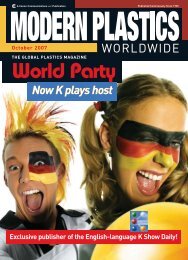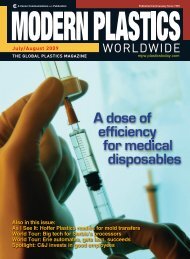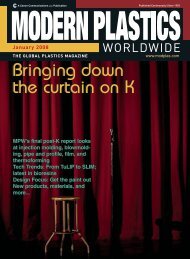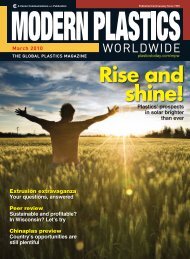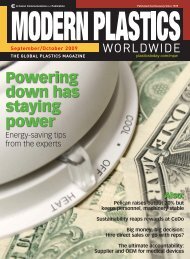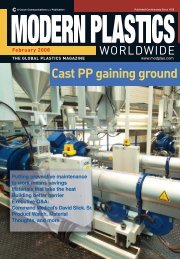amidiq - dae uptlax
amidiq - dae uptlax
amidiq - dae uptlax
Create successful ePaper yourself
Turn your PDF publications into a flip-book with our unique Google optimized e-Paper software.
302<br />
J. L. Arredondo-Figueroa et al./ Revista Mexicana de Ingeniería Química Vol. 6, No. 3 (2007) 301-308<br />
reacondicionamiento (ER). Las características fisicoquímicas del agua y la fluctuación de los parámetros jugaron<br />
un importante papel en la eficiencia del tratamiento. La temperatura del agua varió de 18 °C a 20.5 °C y el oxígeno<br />
disuelto de 4.6 a 7.7 mg/l. Los valores más bajos de estas dos variables fueron registrados en el ST donde los<br />
desechos se acumulan. No se observaron diferencias significativas (p ≤ 0.05) en los valores de pH (8.3-8.6). Estas<br />
condiciones permitieron una buena tasa de nitrificación y desnitrificación. El NAT varió de 0.2 a 1.96 mg/l, sin<br />
embargo, este valor fue 80% más bajo en la salida (ET) comparada con la entrada al sistema (ES). La carga de<br />
biomasa de peces causó una diferencia significativa (p ≤ 0.05) en los valores de NAT y amoniaco en el EP, con los<br />
valores más bajos para 89 kg, comparado con 156 y 194 kg respectivamente. Por su parte la concentración del<br />
nitrito no mostró diferencias significativas (p ≥ 0.05) entre las diferentes cargas. Las concentraciones de nitrato<br />
tuvieron una tendencia acumulativa a 156 kg hasta los 30 días con un rápido decremento. Los resultados mostraron<br />
que la reducción de la carga de biomasa de peces, no cambia aparentemente el equilibrio de la población bacteriana<br />
del biofiltro. Además, es posible controlar las variables como el NAT, el amoniaco y la concentración de nitrito,<br />
manteniendo una adecuada calidad del agua para la trucha arco iris.<br />
Palabras clave: sistema de recirculación, desnitrificación, carga de peces, tasa de nitrificación, trucha arco iris.<br />
1. Introduction<br />
The most important factors to be monitored in<br />
semi-closed or closed recirculating-water systems for<br />
semi-intensive or intensive aquaculture are the nonionized<br />
ammonia (NH3) and nitrite (NO2 - ) (Burrows,<br />
1964; Liao and Mayo, 1974; Leitritz and Lewis,<br />
1976; Spotte, 1979; Crab et al., 2007). These toxic<br />
forms of nitrogen can be considered as limiting<br />
factors for fish survival and growth. The main<br />
pollution source in an intensive fish culture system is<br />
undoubtedly protein-rich feeds supplied to the fish.<br />
Avnimelech and Lacher (1979) found that 80% of<br />
nitrogen in feeds is released into the water and at the<br />
pond bottom. Piedrahita (2003) and Gutierrez-Wing<br />
and Malon (2006) reported that around 75% of the<br />
feed N and P are unutilized and remain as waste in<br />
the water.<br />
Toxic nitrogen forms must be removed from<br />
aquaculture systems since those high concentrations<br />
of nitrite and non-ionized ammonia can drastically<br />
reduce the growth rate, due to damage in gills and<br />
other internal organs. These compounds also<br />
predispose fish to diseases (Burrows, 1964; Colt and<br />
Armstrong, 1981). Three potential remotion methods<br />
for total nitrogen ammonia (TAN) in water reuse<br />
systems are generally applied: (1) air-stripping, (2)<br />
ion exchange and (3) biofiltration (Marking and<br />
Bills, 1982; Franco-Nava et al., 2004).<br />
Biological nitrification is the commonest<br />
method used to eliminate toxic metabolites in high<br />
density semi-closed and closed aquaculture systems.<br />
However, ammonia oxidation to relatively harmless<br />
nitrate forms by biological oxidation must be closely<br />
monitored in the system (Lucchetti and Gray, 1988).<br />
Biofilters used in aquaculture activities are<br />
designed to facilitate ammonia oxidation to nitrite<br />
and nitrate by nitrifying bacteria too. The advantages<br />
and requirements of these devises, have been<br />
reported by DeWitt and Saloa (1960); McCrimmon<br />
and Berst (1966); Burrows and Comb (1968); Scott<br />
and Gillespie (1972); Scherer et al. (1977); Scott and<br />
Allard (1983); Heinsbroek and Kamstra (1990);<br />
Craig et al. (1990) and Millamena et al. (1991); Ling<br />
and Chen (2005) and Malone and Pfeiffer, (2006).<br />
These authors coincide in the importance of this<br />
approach, based in two facts: a constant increase in<br />
water cost and a reducing supply of water of suitable<br />
quality for aquaculture.<br />
Mechanisms such as air-stripping, agitation<br />
and aeration can remove ammonia in gaseous form<br />
from high pH water. Eighty to 90% efficiency of<br />
ammonia removal by air-stripping of effluents can be<br />
obtained in domestic and industrial wastewater<br />
treatment plants (O´Farrel et al. 1972; Yang, 1997).<br />
Several forms of toxic nitrogen can seriously<br />
affect rainbow trout growth. Smith and Piper (1975)<br />
reported that six months of continuous fish exposure<br />
to 0.021 mg/l of non-ionized ammonia could<br />
promote pathological damages on gills tissues. Smart<br />
et al. (1978) indicated that the exposition to sub<br />
lethal levels produced a 3-fold increase in oxygen<br />
consumption. Campbell (1973) suggested that<br />
excessive hyperplasia in gills caused several types of<br />
bacterial diseases. Burkhalter and Kaya (1977) found<br />
that 0.05 mg/l of non-ionized ammonia had a<br />
significant effect on the growth rate.<br />
The acceptable nitrite level in a recirculatingwater<br />
system is around 0.55 mg/l (Jaffe, 1964).<br />
When this concentration is higher, it can promote<br />
methemoglobinemia, drastically reducing oxygen<br />
transportation capacity (Jaffe, 1964). Nitrate toxicity<br />
is only a minor problem in closed recirculating-water<br />
systems due to high tolerance in most fishes.<br />
The objective of this study was to investigate<br />
the effect of air-stripping or biological nitrification<br />
mechanism on ammonia and nitrite remotion rate in<br />
a closed recirculating-water system under three<br />
different load rates of rainbow trout culture.<br />
2. Materials and methods.<br />
The study was conducted in the Planta<br />
Experimental de Produccion Acuicola of the<br />
Universidad Autonoma Metropolitana Iztapalapa.<br />
Arredondo et al. (1996) give a description of the<br />
recirculating-water system. The experiment involved<br />
three rainbow trout, Oncorhynchus mykiss load rates



